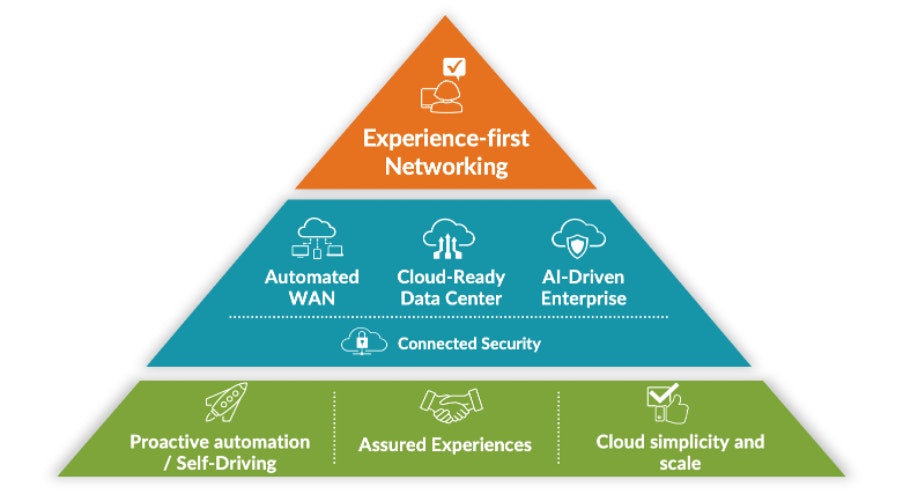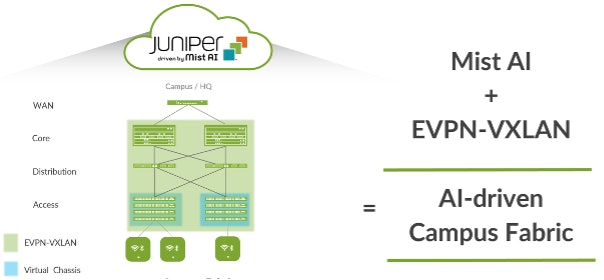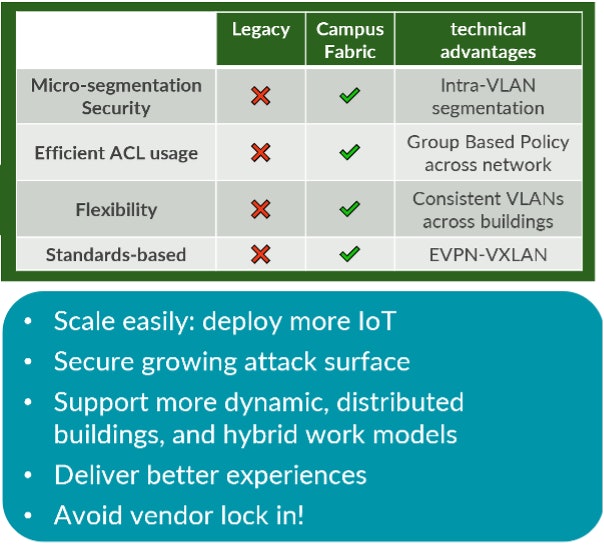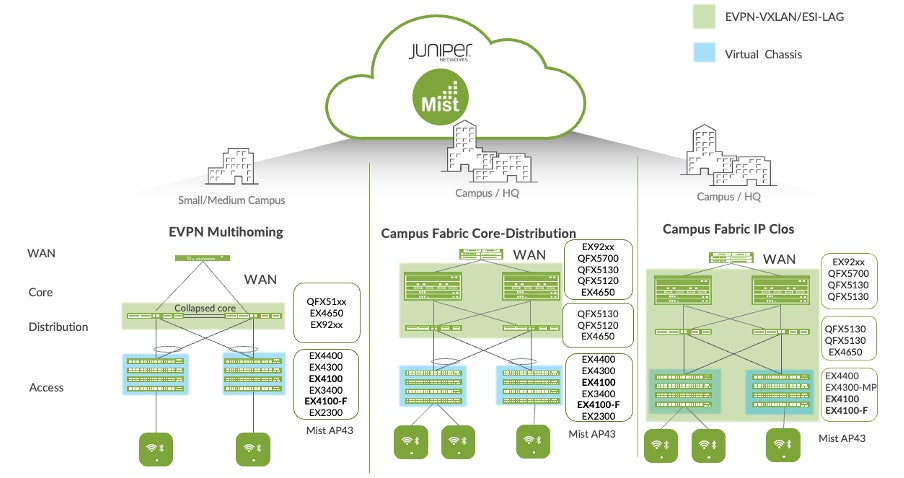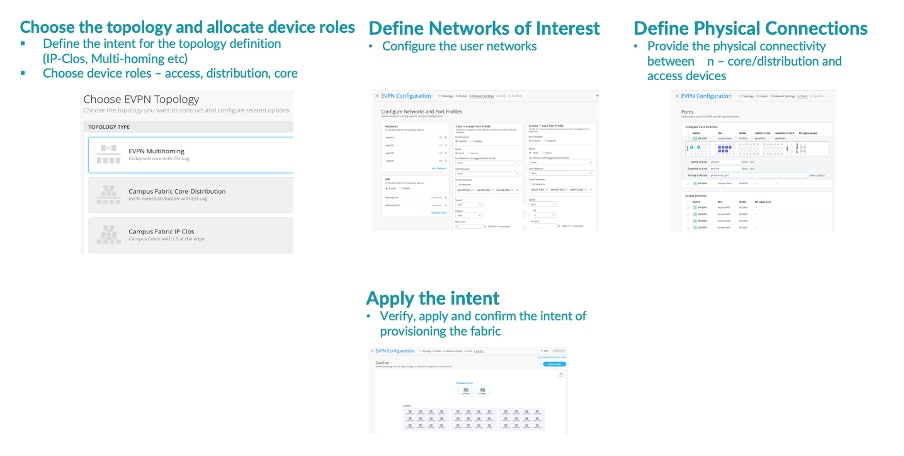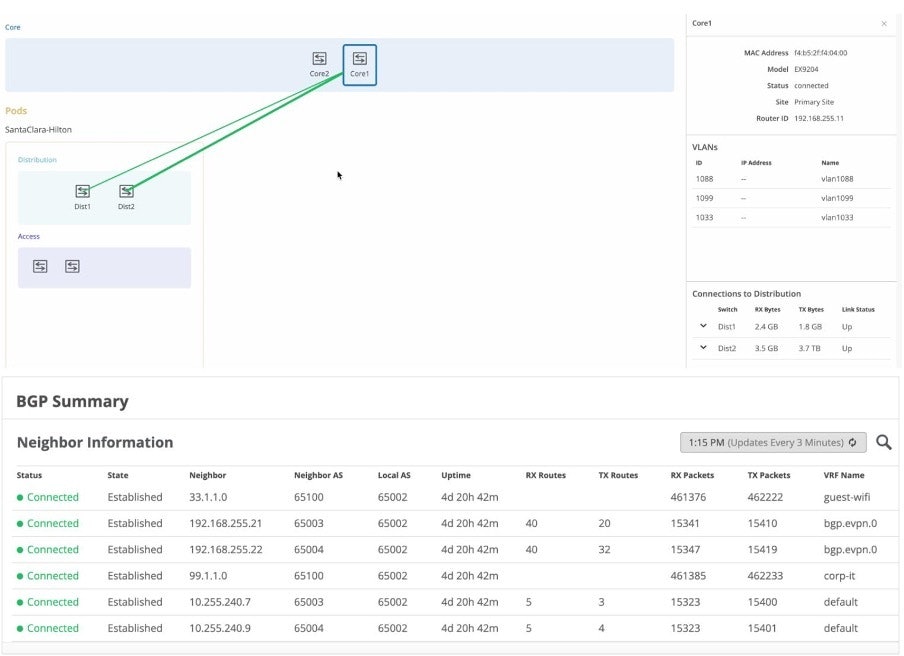Core campus concerns
Campuses come in many different shapes and sizes. However, one thing remains constant – the goal of simplified IT service delivery. Optimised operations and excellent user experiences are often promised but not always possible. Throughout the lifecycle of any campus digital footprint, getting to and maintaining operational readiness might be the initial goal, but operational excellence is an ongoing one. Regardless, for those starting afresh with a new “greenfield” environment or extending into and enhancing their existing “brownfield” deployment, complexity conspires against us to become an ever-increasing drag and burden.
As service level expectations continue to rise, particularly in relation to mobility, reliability and performance, digital services and their dependencies are becoming ever more unwieldy to manage, monitor and troubleshoot. Technology and digital workflows come into focus as potential negative impacts affect more than just costs, resulting in risks to employee satisfaction, security and sometimes, even safety.
Success requires smarter approaches and more intelligent practices to help minimise toil, reduce errors and increase the velocity of service delivery. The key to positive outcomes lies in campus network architectures and the platforms that manage them.
Where to start? Day 0.
Gathering deployment requirements is an unavoidable task. It sets the stage for everything from functional to non-functional requirements and frames security and compliance-related issues. Policy enforcement, monitoring and observability all play a role in architecture and design choices. Even when options are constrained by history, new approaches using overlays and intelligent orchestration simplify designs while assuring stakeholders that the correct choices were made.
With these modern platforms, the design stage can be accelerated and iterated upon more rapidly than before, leading to constraints being identified and problems being solved sooner. By using prototypes and simulations built using automation, fit-for-purpose configs can be generated in advance and system interactions can be tested, without the need for the physical devices to be present, let alone already purchased. It’s with this rapid prototyping and early validation that deployments are accelerated, irrespective of whose smart hands are used to rack, stack and cable.
Goals, challenges and assured outcomes
It’s only human to want to know about and decide upon what happens next. The desire for control, or at least some level of certainty for a project’s next steps and probable outcomes, is fundamental to how we engage with people and manage risk. We seek some level of assurance from chosen systems and processes to facilitate and build trust over time. With reliable, repeatable and more rapid workflows, teams can make better decisions and spend more time on their pivotal top 20% of priorities.
By leveraging trusted automation and AI in the right problem spaces, we can confidently give assurances to ourselves and others. This confidence revolves around our systems meeting requirements but also extends to detecting when, where and how they don’t.
Use cases in technology may differ sometimes, but there are common architecture patterns and protocols that support and benefit all IP-enabled applications. These patterns and protocols may seem complex until the right tools and techniques are used to provision, deploy and operate them. One such force multiplier in the campus is AIOps and EVPN-VXLAN.
A campus evolution
EVPN-VXLAN is well-known and built on open standards. These standards originate from the communications provider and data centre space but are now being used extensively in the campus, where they solve similar issues but for slightly different use cases. EVPN-VXLAN has many benefits for safely extending layer 2 in the campus space, but some of its most important characteristics are its overall flexibility, standardisation and extended security capabilities. Group-Based Policy (GBP) is of note for achieving and assuring micro-segmentation throughout a campus.
Reachability, security and assurance can now be easily extended across a full-stack campus footprint using Mist AI and EVPN-VXLAN. Consistent policy enforcement, performance and predictability are achievable and different scenarios are catered to depending on evolution and needs.
1. Small/Medium Campus (EVPN Multihoming) as a collapsed core replacement.
- SMB e.g. retail big box store
- Juniper Mist AI manages up to 4 pods
- Ideal for topologies transitioning from legacy/proprietary technologies to EVPN-based fabric i.e., STP, MC-LAG
2. Campus/HQ (Campus Fabric Core-Distribution) where EVPN-VXLAN extends across core and distribution.
- Medium to large-scale topologies, e.g. hospitals, universities
- Recommended for use cases where the access layer is L2 with standard LACP
3. Campus/HQ (Campus Fabric IP Clos) where EVPN-VXLAN comes all the way down to the access layer.
- Large enterprises and other large topologies
- Micro-segmentation: GBP use cases
- Greenfields and L3/VXLAN on the access layer
The Confidence to Deploy on Day 1
Building, testing and deploying designs has truly become simpler, even in the face of accelerating complexity. With a focus on the validation and speed of deployment for brownfields or greenfields, Mist AI not only carries IT teams from Day 0 to Day 1 but has their backs from Day 2+, where the majority of time and energy is spent by operational teams.
When designing and deploying, there are four main steps highlighted below to get a campus fabric operational. Traditional stumbling blocks like cable matrices and subsequent misconfiguration are simply addressed with downloadable cable spreadsheets and further checks by Mist AI’s wired assurance, which uses LLDP and connection tables to perform validations. Templates can also be used to speed up the definition and deployment of network and port profiles.
At the end of Day 1, the expectation and understanding is that a design and its associated deployment is not just correct but that all relevant stakeholders can be assured of service level expectations. With a mixture of smarter tooling and more intelligent methods, teams can move through traditional phases faster and finally focus on delivering superior experiences for both operators and users alike.
EVPN Insights
And when teams need the extra confidence that everything is working as it should, they can leverage Mist EVPN Insights to quickly surface network state from the perspective of each and every node. Ascertaining BGP neighbour adjacency status and related attributes is easy and key to understanding where any problems or issues may lie. Everything from local and neighbour ASNs to loopback addresses, packet counts and VRF names are presented clearly and simply.
Higher velocity teams
When IT teams move faster without sacrificing quality, everyone begins to feel a renewed sense of agency and momentum. When users and clients have their service level expectations met and exceeded, the table stakes can be raised and new and interesting challenges can be embraced.
Additionally, it’s not always about how well things perform but how well they fail. With AIOps enhancing operational teams’ capabilities, troubleshooting, actioning fixes and communicating next steps become faster and easier for everyone at every level. Frontline support gains additional insights and agency, while engineering leadership can rest assured that IT teams have reduced toil and increased satisfaction.
Assurance on Day 2
Optimising for operations is a team sport. Getting to “production” or a “go-live” date is just the start of a longer journey that involves many teams, functions and disciplines. From IT to facilities and executive leadership to the cleaning staff, everyone has a role in keeping the lights on and the show on the road. When departing on this journey with the goal of simplifying, securing and scaling up, there are many considerations that lead to experience-first networking and the devil is in the details. The service promise is not just to the users, but also to adjacent teams and other operational functions across the campus. Assurances are given and service level targets are expected to be met, but how can IT teams deliver on these promises?
Networks are distributed systems, and the often opaque interactions between applications and physical or virtual actors mean a breadth and depth of complexity to wrangle constantly.
AI-driven operations enhance and empower teams to deliver faster and more accurately by using intelligent and automated monitoring that’s built on better observability and uses machine learning for higher-fidelity instantaneous troubleshooting. When AIOps can find the root cause and suggest proven corrective actions, the only question left is which loops to automate fully and where to focus next.
Campus conclusion
So, what can an AI-driven campus fabric do for you and your organisation?
- Rapidly reduce time and cost for the design/provision, deploy and operate phases.
- Assure better user/operator experiences, security and connectivity.
- Solve for both yesterday’s and tomorrow’s challenges.
- Unify and simplify operations across diverse environments.
- Power the service promise and assurances for stakeholders.
Do you want to know more about this topic?
Our experts and sales teams are at your service. Leave your contact information and we will get back to you shortly.

More Juniper Networks updates

HPE Juniper Networks
HPE completes acquisition of Juniper Networks
HPE has completed its $14 billion acquisition of Juniper Networks, reshaping the enterprise networking landscape with a strong focus on AI-driven, cloud-managed infrastructure.

Enterprise networking
Gartner MQ 2025: Juniper, Fortinet and HPE take the lead in enterprise networking
Discover why Juniper, Fortinet and HPE lead the 2025 Gartner Magic Quadrant for Enterprise LAN. Explore their unique strengths — and how Nomios helps enterprises design, deploy and secure future-ready networks.


Network management Mist AI
Overloaded network team? 3 signs that it's time for support
IT teams are often under pressure. No less than 85.8% of organisations are struggling with a shortage of qualified IT personnel. This staff shortage, combined with the increasing complexity of modern networks, is creating a workload that continues to grow.

Michel Adelaar



